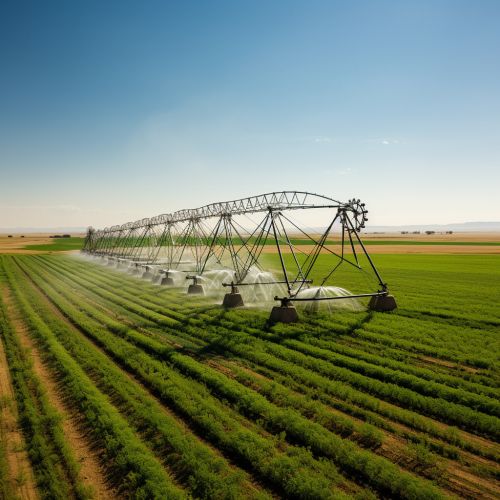Irrigation Methods
Introduction
Irrigation is the artificial application of water to the land or soil. It is used to assist in the growing of agricultural crops, maintenance of landscapes, and revegetation of disturbed soils in dry areas and during periods of inadequate rainfall. Additionally, irrigation also has a few other uses in crop production, which include protecting plants against frost, suppressing weed growth in grain fields and preventing soil consolidation.
In contrast, agriculture that relies only on direct rainfall is referred to as rain-fed or dryland farming. Irrigation systems are also used for cooling livestock, dust suppression, disposal of sewage, and in mining. Irrigation is often studied together with drainage, which is the natural or artificial removal of surface and sub-surface water from a given area.
Types of Irrigation
There are several methods of irrigation, each with its own set of advantages and disadvantages. These methods can be broadly classified into surface irrigation, localized irrigation, drip irrigation, sprinkler irrigation, center pivot irrigation, lateral move irrigation, sub-irrigation, manual irrigation, and sub-surface drip irrigation.
Surface Irrigation
Surface irrigation is the oldest and most common method of irrigation. Water is distributed over the surface of the soil, usually by gravity rather than by pumping. The water moves over the soil surface by the force of gravity to wet and infiltrate the soil. Surface irrigation can be subdivided into furrow, border strip or basin irrigation. It is often the most applicable irrigation method for level ground with high water availability.
Localized Irrigation
Localized irrigation is a system where water is distributed under low pressure through a piped network, in a pre-determined pattern, and applied as a small discharge to each plant or adjacent to it. Localized irrigation systems include drip irrigation and trickle irrigation.
Drip Irrigation
Drip irrigation, also known as trickle irrigation, functions as its name suggests. Water is delivered at or near the root zone of plants, drop by drop. This method can be the most water-efficient method of irrigation, if managed properly, since evaporation and runoff are minimized.
Sprinkler Irrigation
In sprinkler irrigation, water is piped to one or more central locations within the field and distributed by overhead high-pressure sprinklers or guns. A system using sprinklers, sprays, or guns mounted overhead on permanently installed risers is often referred to as a solid-set irrigation system.
Center Pivot Irrigation
Center pivot irrigation is a method of crop irrigation in which equipment rotates around a pivot and crops are watered with sprinklers. A circular area centered on the pivot is irrigated, often creating a circular pattern in crops when viewed from above.
Lateral Move Irrigation
Lateral move irrigation is a type of irrigation system that moves in a linear fashion across the field, applying water to the crops as it moves. Lateral move systems are unique in that they can irrigate rectangular parcels of land, unlike center pivot systems which can only irrigate circular areas.
Sub-Irrigation
Sub-irrigation also known as seepage irrigation, is a method of irrigation where water is delivered directly to the root zone of plants by subsurface application. With this method, water is either delivered to the field by ditches or pipes which then seep into the ground, or by raising the water table within the root zone through a system of pumps and wells.
Manual Irrigation
Manual irrigation is a type of irrigation where water is applied by hand. This method is labor-intensive and requires a significant amount of time and effort.
Sub-Surface Drip Irrigation
Sub-surface drip irrigation (SDI) is a variation of traditional drip irrigation where the dripline is permanently buried below the soil surface, typically 10-20 cm below the surface. The depth of placement depends on the depth of the plant's roots, the type of soil, and the crop being grown.
Efficiency and Concerns
Irrigation methods are typically evaluated based on their water efficiency. However, the efficiency of an irrigation method depends on many factors, including the type of crop, the soil type, the weather, and the method's suitability to local conditions. While drip irrigation may be the most efficient in terms of water use, it is not always the most cost-effective method due to its high initial cost and maintenance requirements.
Environmental concerns related to irrigation include water scarcity, loss of biodiversity, spread of waterborne diseases, and changes in soil structure and fertility. Over-irrigation can lead to waterlogging and soil salinization, particularly in areas with high evaporation rates.
See Also


